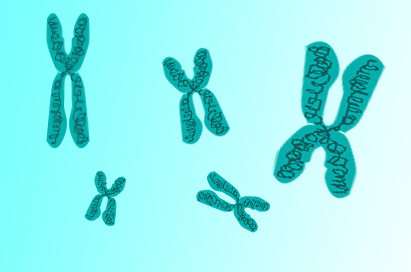Wait! There’s Two of You!
Genetic engineering is an amazing and useful science, but has some possibly catastrophic consequences.

A close-up of a chromosome, done in Photoshop by Marty Rhey.
October 1, 2014
Genetic engineering. Think about that phrase for a moment. We, the human race, have finally reached a point where we can delve into our very roots and change ourselves. In the near future, we could create superheroes, entirely new species, all on a whim. However, there are those who would object.
Most of us are familiar with the concept of genetic modification. “I know what it is,” you say, as you struggle for a definition. “You take a gene from one animal and put it into another.”
You’ve only got part of the story there – the basics. You can do so much with genetic engineering; according to Mother Nature Network, you could create glow-in-the-dark cats, make goats spin bulletproof silk in their udders, and make vaccinated bananas. You could clone animals – like Dolly the Sheep – cure cancer and create the perfect human, although exactly what the perfect human is is up for debate.
However, many environmentalists and animal rights activists have called attention to one issue – what if animals suffer due to our research? A pig born missing its bones, a cat with half a brain: these are all possible side effects of genetic experimentation, and so many think that it should be banned.
The potential, though, is just too great. We could save the world with genetic engineering – scientists are currently working to create new species of plants which capture the astronomical amounts of carbon we add to the atmosphere annually and store it underground for centuries. Still, some environmentalists hawk the dangers of tinkering with genes. They say that our experiments could change the ecosystem, cause a global shift in our plants and animals, causing the new genes to be spread across species, creating strange creatures and unnatural effects. But in reality, we don’t know what could happen.
In order to resolve these two issues, geneticists must exercise caution. They must take care that their plants and animals are strictly controlled – either not allowed to enter the outside world or made infertile. Either way, I am sure that researchers will continue to discover amazing things in the roots of life.








